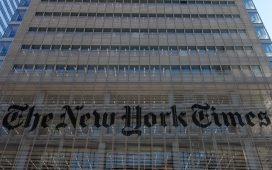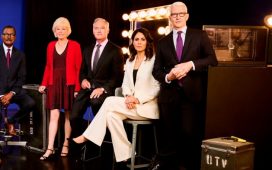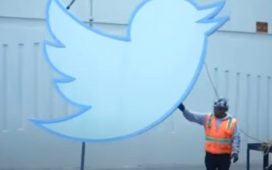Diamond Sports Group, a consortium of a few dozen regional sports networks scattered across the US, was valued at $11bn as recently as 2019. By the end of last year, however, it was in bankruptcy and near ready to liquidate.
What then ensued could be described, in baseball terms, as a bottom-of- the-ninth-inning rally. In a surprise move in January, Amazon agreed to pump in $115mn in cash into Diamond, an infusion that is the centrepiece of a newly-crafted, intricate restructuring plan. If approved by a bankruptcy court in the coming weeks, the deal will allow the broadcaster to continue airing basketball, hockey and baseball fixtures across American cities.
The Diamond saga is more than just a run-of-the-mill corporate restructuring. The case has become a proxy war for the future of live sports and television broadcasts in the US, as leagues and distributors debate the proposition of when, or even if, live fixtures migrate entirely away from linear television and on to digital streaming platforms.
The number of subscribers to cable and satellite pay-TV packages in the US has dipped from about 100mn a decade ago to roughly 60mn today. Diamond’s portfolio of live sports is accessed almost exclusively through cable television packages and its subscriber count has fallen by almost a quarter since it was acquired by Sinclair Broadcast Group from Fox just before the pandemic, near the high-water mark of the pay-TV market.
“Sports leagues have to figure out the right pricing models to watch their games”, said longtime media analyst and consultant Brian Wieser. “The risk of getting that wrong is turning into a niche sport like boxing, which decided its best fights would only be on pay-per-view.”
At the time of its bankruptcy filing last year, 40 clubs across three major professional sports leagues — Major League Baseball, the National Basketball Association, and the National Hockey League — had contracts with Diamond to air local fixtures.
The regional sports network is a quirk of US broadcasting, given the nation’s size and span across four time zones in the contiguous 48 states alone. With multiple MLB, NBA and NHL matches airing simultaneously each night, a cable subscriber in Kansas City wants access to a different 7pm game than a subscriber in Milwaukee.
The strongest and largest media markets in the US, including in New York, Boston, and Los Angeles, have successful standalone regional sports networks supported by millions of local subscribers. By contrast, Diamond Sports Group consolidated dozens of regional networks in midsize markets from Texas to Florida to Arizona.
But the continuing shift from linear broadcast and pay television to digital streaming had shattered Diamond’s business model, which depended on elevated levels of pay-TV subscribers.
In the run-up to its 2023 bankruptcy filing, Diamond halted some contractual payments it owed to many of those teams, leaving leagues and club owners scrambling to find emergency broadcasting options, in some cases in the middle of their seasons.
Some, such as the NBA’s Phoenix Suns, yanked their fixtures off Diamond-owned Bally Sports and put the games on free-to-air television. The MLB also took the opportunity to test out something new: pulling the local rights of the Arizona Diamondbacks and San Diego Padres away from the individual clubs and into its own control.
Diamond’s creditors, who collectively held $8.9bn debt, were, at the nadir, probably set to recover only a few nickels on the dollar. At one point, the sides had even favoured a “wind-down” plan where Diamond would collect fees for the final 2023-2024 sports season, pay out the meagre proceeds to stakeholders and then cease operations for good.
In that scenario, Major League Baseball could then have had the opportunity to centralise individual franchise streaming rights for clubs that had been contracted to Diamond into a league-controlled bundle. MLB declined to comment.
Diamond’s bankruptcy advisers approached Amazon as they were exploring their options last year, according to a person familiar with the matter. Diamond bondholders such as Prudential and Hein Park Capital were also scrambling to assemble a go-forward plan that could save their investment.
The tech giant saw a strategic opportunity to capture more of the US live sports market, for which it currently has a hodgepodge of rights ranging from Thursday night National Football League games to an assortment of US professional women’s soccer and basketball.
Media and technology observers believe Amazon’s sports push has two motivations. First, by adding another plank to its Prime service, it can create more loyalty among customers who are charged nearly $200 a year for free package deliveries as well as streaming video.
Second, Amazon in recent years has become a digital advertising powerhouse and the addition of streaming hundreds of games would provide even more inventory to pitch marketers.
Amazon declined to comment.
By mid-January, Diamond had surprised Wall Street and the sports world by announcing it had struck a deal with a majority of its creditors to stand up a reorganised company. As a part of the deal, Amazon would buy a $115mn convertible note that could swap into 15 per cent of the equity of the new Diamond as well as a separate option to put in another $50mn of equity at a $500mn equity valuation.
In addition to the Amazon investment, junior creditors are providing $450mn of bankruptcy process and exit financing that will give them the bulk of the ownership of new Diamond. Sinclair has also agreed to pay Diamond $495mn to settle claims that the parent had siphoned billions in fees and dividends from the subsidiary.
However, much of the cash infusion is already spoken for in repayments to senior creditors and money owed to teams. It is also unclear how much critical mass Amazon can really accumulate as Diamond only has the streaming rights for five baseball teams. Diamond will publish its targeted valuation as a reorganised company in the coming weeks.
In January, projections disclosed in the Amazon negotiations showed that Diamond expected its linear revenue to fall from $2.5bn to $1.8bn between 2023 and 2026. Streaming revenue, however, is to jump from $50mn to nearly $700mn over that period. These projections may be revised in April to account for any new deals struck.
Sports teams will have their respective linear TV agreements with Diamond while five of those baseball teams, as well all Diamond’s more than 25 NBA and NHL franchises, have given the network its streaming rights. This Diamond direct-to-consumer content will be distributed via Amazon Prime.
The reorganised Diamond is expected to be valued at about $1bn based on previous debt trading levels and guidance from people close to the deal.
For Amazon, the modest investment could, if successful, set a new standard for distributing streaming sport content. One person involved in the Amazon negotiations for Diamond described the deal with the Seattle-based behemoth using a sports analogy: Diamond was like a player with an expiring contract acquired at the midseason trade deadline.
If there were long-term synergies, a longer arrangement could be later struck, leaving the interim period as like a trial period. “This way they get to see if there is a cultural fit,” said this adviser. “Amazon loves live sports. The deal puts them in position to be the provider down the road.”










